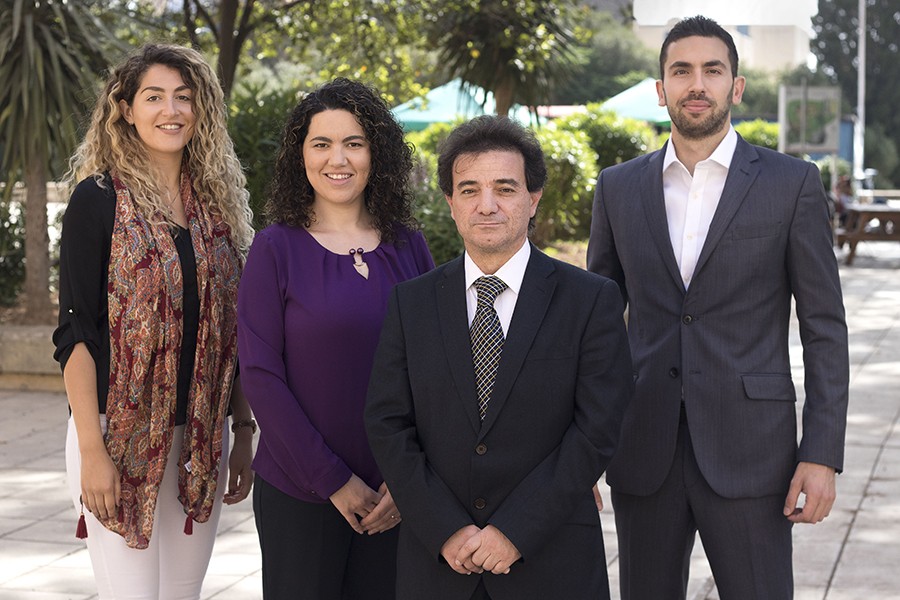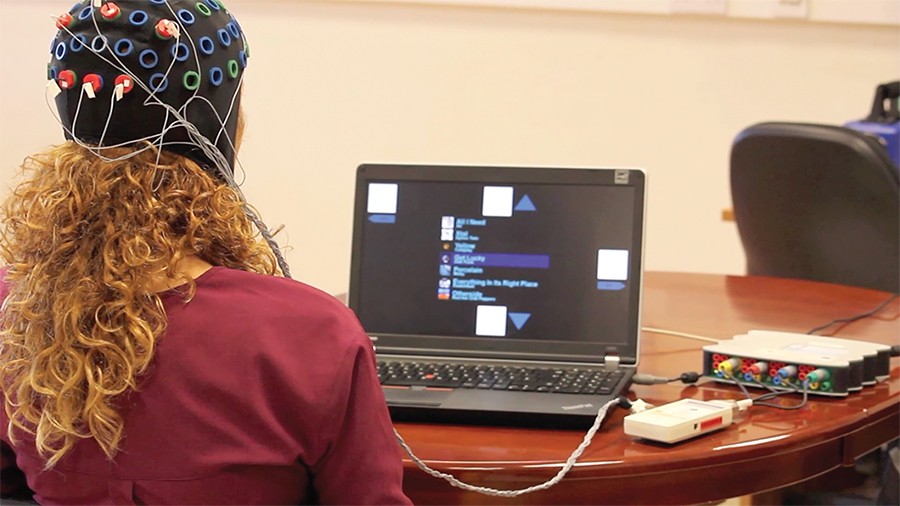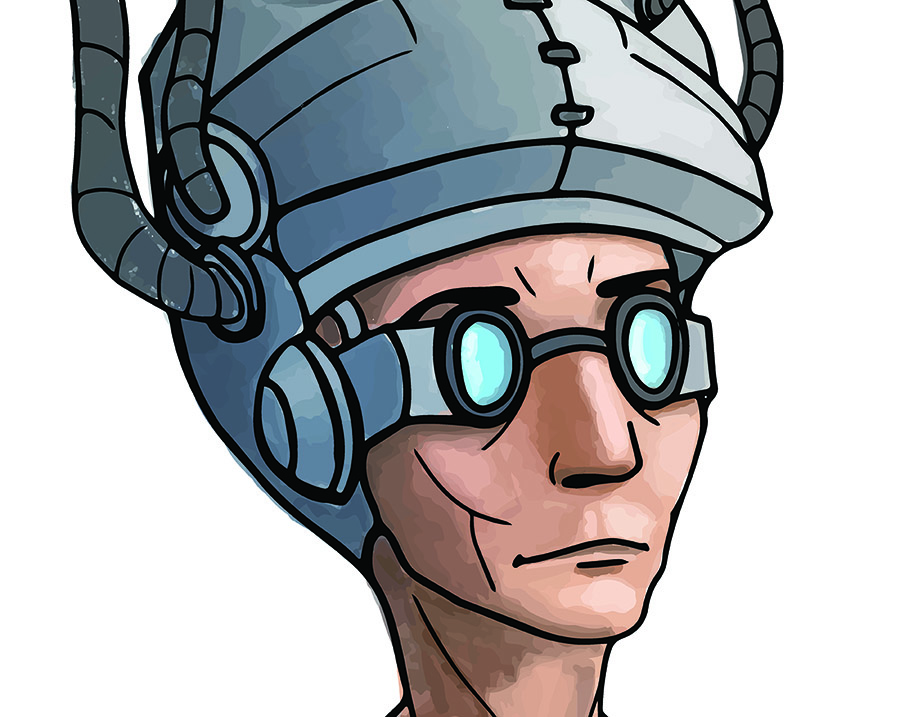The power to control objects with your mind was once a dream held by science fiction fans worldwide. But is this impossible feat now becoming possible? Dr Tracey Camilleri tells Becky Catrin Jones how a team at the University of Malta (UM) is using technology to harness this ability to help people with mobility problems.
Listen to this article as a podcast

Imagine having the power to control devices around you without moving a muscle. A quick glance at a control panel and you could change the channel on your TV, play your favourite song on YouTube, turn on a light, or get your coffee machine to prepare you the perfect brew. But automation can go far beyond these menial tasks.
Co-ordinator of the BrainApp project, Dr Tracey Camilleri, together with her colleagues Prof. Kenneth Camilleri, Dr Owen Falzon, and Ing. Rosanne Zerafa, have been working steadily over the last 14 years to make it possible for movement-impaired individuals to control computers or machines using their brain signals. The team combined their backgrounds in signal processing, biomedical cybernetics, and programming to produce a system that can monitor brain activity, recognise patterns in this activation, and then translate this to control an external appliance, using nothing but brain power.
How it works
To change the station on your TV with your mind, communication needs to be established between your brain and the TV. Brain Computer Interfaces (BCI) can make this link happen. Brain cells use small electrical pulses called action potentials to pass a message on from one cell to another. Their firing rate depends on the stimulus; if you focus on a flashing light, the neurons’ action potentials will follow the same frequency. A BCI decodes the brain patterns generated in response to these stimuli and determines what the user intended to do. Once deciphered, the system sends a message to the gadget to carry out the desired task.
‘If the brain activity of a subject is ‘high enough’ at specific frequencies, then the system will trigger a signal,’ says Tracey Camilleri. This also means that the system must be able to distinguish between intended commands and the idle state. ‘A robust system can handle the time when the user is not using it. If it handles the idle state well, then the chance of the system being triggered accidentally is reduced considerably,’ she continues.

For this to work, the user must wear a headset with electrodes touching their head. These electrodes record the brain signals picked up from neurons just below the scalp, a technique known as electroencephalography (EEG). In medical research, it is widely used to monitor sleep and diagnose epilepsy, among other things. ‘EEGs allow us to record the brain signals at a good resolution, while being non-invasive,’ Tracey Camilleri states. By using EEG rather than the eyes to control a device, the system becomes even more accessible to people with limited eye movement and is less likely to be distracted by changes in light, shadow, or nudges of the head.
This system was first implemented in Malta with WALNUT, a brain-controlled music player app. Whilst wearing the headset, users could focus their attention on one of a set of flashing squares on the app and choose a song from a list, control the volume, pause, or skip to the next song. Although currently only tested in a lab setting, the team were confident the system was solid. ‘Response of the brain to visual stimuli comes naturally for all subjects and the BCI can be tailored for the subject using it to ensure a good performance,’ says Camilleri of the trial system.
Nobler aims
While the prospect of changing your music without using your hands may be really exciting to many, the team have even more ambitious projects in mind. Similar programs and BCIs could be used to empower those with limited mobility. One focus of the team at the UM is to expand this technology and apply it to a motorised bed. This will enable people with limited mobility to control the various bed functions on their own and live a more independent life. This is the main goal of the BrainApp project.
With continued research and development, the application really is limitless, and the impact it could have on the lives of those with restricted mobility and independence is huge.
The goal has attracted the support of many. So far, the project has received a three-year funding package from the Malta Council for Science & Technology, and has established a partnership with Idox Health (formerly known as 6PM Group) to develop a platform for brain-controlled applications. They also have support from Karen Grech Hospital and FITA, who are giving their input on what features patients would need to have in their motorised bed. ‘It is important for us to make sure that the system we develop is suitable for its intended users,’ highlights Tracey Camilleri.
The choice of EEG headset is a critical issue for BCI applications. Traditional EEGs use gel to improve electrical conductivity to the electrodes, but this is messy and difficult to apply. Replacing these with dry sensors is far more practical and makes everyday use a possibility. Such headsets have also plummeted in price, now available for a mere $250, meaning that more people can buy and use them. The downside is that these cheaper headsets lack electrode coverage and sensitivity, but the field is at least heading in the right direction. Once good quality, cheap devices reach users, the market could explode.
Challenges come with the territory. Most BCIs have been tested within a lab setting: a controlled environment with minimal distractions. The real world could be problematic. BCI recognition systems depend on wearers focusing on one spot. As a result, the UM team is going a step further, investigating these nuisance signals such as audio, visual distractors, or movements, and determining how they affect brain signals. All this will help them answer the question of what signal processing techniques need to be used to make sure the system is reliable in a practical scenario.
The concept of the work and prototype seen in WALNUT is amazing, but even more exciting is the technology’s potential. With continued research and development, the application really is limitless, and the impact it could have on the lives of those with restricted mobility and independence is huge. Keep your eyes focused on this group as they use the powers of their brains to help ours slide into a hands-free technological age.
Author: Becky Catrin Jones





Comments are closed for this article!